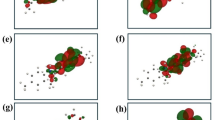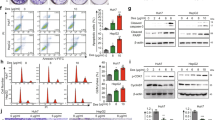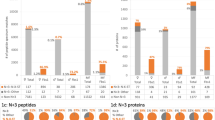Abstract
Various lipids and lipid metabolites are bound to and modify the proteins in eukaryotic cells, which are known as ‘protein lipidation’. There are four major types of the protein lipidation, i.e. myristoylation, palmitoylation, prenylation, and glycosylphosphatidylinositol anchor. N-myristoylation refers to the attachment of 14-carbon fatty acid myristates to the N-terminal glycine of proteins by N-myristoyltransferases (NMT) and affects their physiology such as plasma targeting, subcellular tracking and localization, thereby influencing the function of proteins. With more novel pathogenic N-myristoylated proteins are identified, the N-myristoylation will attract great attentions in various human diseases including infectious diseases, parasitic diseases, and cancers. In this review, we summarize the current understanding of N-myristoylation in physiological processes and discuss the hitherto implication of crosstalk between N-myristoylation and other protein modification. Furthermore, we mention several well-studied NMT inhibitors mainly in infectious diseases and cancers and generalize the relation of NMT and cancer progression by browsing the clinic database. This review also aims to highlight the further investigation into the dynamic crosstalk of N-myristoylation in physiological processes as well as the potential application of protein N-myristoylation in translational medicine.
Similar content being viewed by others
Log in or create a free account to read this content
Gain free access to this article, as well as selected content from this journal and more on nature.com
or
References
Chen BE, Sun Y, Niu JX, Jarugumilli GK, Wu X. Protein lipidation in cell signaling and diseases: function, regulation, and therapeutic opportunities. Cell Chem Biol. 2018;25:817–31.
Nadolski MJ, Linder ME. Protein lipidation. FEBS J. 2007;274:5202–10.
Jing H, Zhang X, Wisner SA, Chen X, Spiegelman NA, Linder ME, et al. SIRT2 and lysine fatty acylation regulate the transforming activity of K-Ras4a. Elife. 2017;6:1–32.
Cao J, Sun L, Aramsangtienchai P, Spiegelman NA, Zhang X, Huang W, et al. HDAC11 regulates type I interferon signaling through defatty-acylation of SHMT2. Proc Natl Acad Sci U S A. 2019;116:5487–92.
Lin HN, Su XY, He B. Protein lysine acylation and cysteine succination by intermediates of energy metabolism. Acs Chem Biol. 2012;7:947–60.
Wright MH, Heal WP, Mann DJ, Tate EW. Protein myristoylation in health and disease. J Chem Biol. 2010;3:19–35.
Adam RM, Mukhopadhyay NK, Kim J, Di Vizio D, Cinar B, Boucher K, et al. Cholesterol sensitivity of endogenous and myristoylated Akt. Cancer Res. 2007;67:6238–46.
Hu T, Li C, Cao Z, Van Raay TJ, Smith JG, Willert K, et al. Myristoylated Naked2 antagonizes Wnt-beta-catenin activity by degrading Dishevelled-1 at the plasma membrane. J Biol Chem. 2010;285:13561–8.
Schwertassek U, Buckley DA, Xu CF, Lindsay AJ, McCaffrey MW, Neubert TA, et al. Myristoylation of the dual-specificity phosphatase c-JUN N-terminal kinase (JNK) stimulatory phosphatase 1 is necessary for its activation of JNK signaling and apoptosis. FEBS J. 2010;277:2463–73.
Tan YW, Hong WJ, Chu JJ. Inhibition of enterovirus VP4 myristoylation is a potential antiviral strategy for hand, foot and mouth disease. Antivir Res. 2016;133:191–5.
Kumar S, Sharma RK. N-Terminal region of the catalytic domain of human N-myristoyltransferase 1 acts as an inhibitory module. PLos ONE. 2015;10:1–20.
Takamune N, Gota K, Misumi S, Tanaka K, Okinaka S, Shoji S. HIV-1 production is specifically associated with human NMT1 long form in human NMT isozymes. Microbes Infect. 2008;10:143–50.
Glover CJ, Hartman KD, Felsted RL. Human N-myristoyltransferase amino-terminal domain involved in targeting the enzyme to the ribosomal subcellular fraction. J Biol Chem. 1997;272:28680–9.
Tang HY, Han M. Fatty acids regulate germline Sex determination through ACS-4-dependent myristoylation. Cell. 2017;169:457–69.
Lodge JK, Johnson RL, Weinberg RA, Gordon JI. Comparison of myristoyl-CoA:protein N-myristoyltransferases from three pathogenic fungi: Cryptococcus neoformans, Histoplasma capsulatum, and Candida albicans. J Biol Chem. 1994;269:2996–3009.
Ducker CE, Upson JJ, French KJ, Smith CD. Two N-myristoyltransferase isozymes play unique roles in protein myristoylation, proliferation, and apoptosis. Mol Cancer Res. 2005;3:463–76.
Teng YB, Jing H, Aramsangtienchai P, He B, Khan S, Hu J, et al. Efficient demyristoylase activity of SIRT2 revealed by kinetic and structural studies. Sci Rep.-Uk. 2015;5:1–8.
Zhang XY, Spiegelman NA, Nelson OD, Jing H, Lin HN. SIRT6 regulates Ras-related protein R-Ras2 by lysine defatty-acylation. Elife. 2017;6:1–16.
Yang SH, Shrivastav A, Kisinski C, Sharma RK, Chen MH, Berthiaume LG, et al. N-myristoyltransferase 1 is essential in early mouse development. J Biol Chem. 2005;280:18990–5.
Darieva Z, Webber A, Warwood S, Sharrocks AD. Protein kinase C coordinates histone H3 phosphorylation and acetylation. Elife. 2015;4:1–15.
Seykora JT, Myat MM, Allen LAH, Ravetch JV, Aderem A. Molecular determinants of the myristoyl-electrostatic switch of MARCKS. J Biol Chem. 1996;271:18797–802.
Goldberg J. Structural basis for activation of ARF GTPase: mechanisms of guanine nucleotide exchange and GTP-myristoyl switching. Cell. 1998;95:237–48.
Liu YZ, Kahn RA, Prestegard JH. Structure and membrane interaction of myristoylated ARF1. Structure. 2009;17:79–87.
Tanaka T, Ames JB, Harvey TS, Stryer L, Ikura M. Sequestration of the membrane-targeting myristoyl group of recoverin in the calcium-free state. Nature. 1995;376:444–7.
Braun T, McIlhinney RAJ, Vergeres G. Myristoylation-dependent N-terminal cleavage of the myristoylated alanine-rich C kinase substrate (MARCKS) by cellular extracts. Biochimie. 2000;82:705–15.
Gaffarogullari EC, Masterson LR, Metcalfe EE, Traaseth NJ, Balatri E, Musa MM, et al. A myristoyl/phosphoserine switch controls cAMP-dependent protein kinase association to membranes. J Mol Biol. 2011;411:823–36.
Utsumi T, Sakura N, Nakano K, Ishisaka R. C-terminal 15 kDa fragment of cytoskeletal actin is posttranslationally N-myristoylated upon caspase-mediated cleavage and targeted to mitochondria. FEBS Lett. 2003;539:37–44.
Cadwallader KA, Paterson H, Macdonald SG, Hancock JF. N-Terminally myristoylated ras proteins require palmitoylation or a polybasic domain for plasma-membrane localization. Mol Cell Biol. 1994;14:4722–30.
Martin ML, Busconi L. Membrane localization of a rice calcium-dependent protein kinase (CDPK) is mediated by myristoylation and palmitoylation. Plant J. 2000;24:429–35.
Barylko B, Chen YJ, Hennen J, Angert I, Chen Y, Mueller JD, et al. Myristoylation-dependent palmitoylation of the receptor tyrosine kinase adaptor FRS2alpha. Biochem-Us. 2019;58:2809–13.
Alvarez R, Lopez DJ, Casas J, Llado V, Higuera M, Nagy T, et al. G protein-membrane interactions I: Galphai1 myristoyl and palmitoyl modifications in protein-lipid interactions and its implications in membrane microdomain localization. Biochim Biophys Acta. 2015;1851:1511–20.
Utsumi T, Matsuzaki K, Kiwado A, Tanikawa A, Kikkawa Y, Hosokawa T, et al. Identification and characterization of protein N-myristoylation occurring on four human mitochondrial proteins, SAMM50, TOMM40, MIC19, and MIC25. Plos One. 2018;13:1–27.
Maeda A, Uchida M, Nishikawa S, Nishino T, Konishi H. Role of N-myristoylation in stability and subcellular localization of the CLPABP protein. Biochem Biophys Res Commun. 2018;495:1249–56.
Demetriadou A, Morales-Sanfrutos J, Nearchou M, Baba O, Kyriacou K, Tate EW, et al. Mouse Stbd1 is N-myristoylated and affects ER-mitochondria association and mitochondrial morphology. J Cell Sci. 2017;130:903–15.
Santonico E, Belleudi F, Panni S, Torrisi MR, Cesareni G, Castagnoli L. Multiple modification and protein interaction signals drive the Ring finger protein 11 (RNF11) E3 ligase to the endosomal compartment. Oncogene. 2010;29:5604–18.
Kimura A, Kurata Y, Nakabayashi J, Kagawa H, Hirano H. N-Myristoylation of the Rpt2 subunit of the yeast 26S proteasome is implicated in the subcellular compartment-specific protein quality control system. J Proteom. 2016;130:33–41.
Li HL, Gorfe AA. Aggregation of lipid-anchored full-length H-Ras in lipid bilayers: simulations with the MARTINI force field. Plos One. 2013;8:1–11.
Spassov DS, Ruiz-Saenz A, Piple A, Moasser MM. A dimerization function in the intrinsically disordered N-terminal region of Src. Cell Rep. 2018;25:449–63.
Le Roux AL, Mohammad IL, Mateos B, Arbesu M, Gairi M, Khan FA, et al. A myristoyl-binding site in the SH3 domain modulates c-Src membrane anchoring. Iscience. 2019;12:194–203.
Matsubara M, Nakatsu T, Kato H, Taniguchi H. Crystal structure of a myristoylated CAP-23/NAP-22 N-terminal domain complexed with Ca2+/calmodulin. Embo J. 2004;23:712–8.
Resh MD. A myristoyl switch regulates membrane binding of HIV-1 Gag. Proc Natl Acad Sci U S A. 2004;101:417–8.
Dolezal M, Zabransky A, Dostal J, Vanek O, Brynda J, Lepsik M, et al. Myristoylation drives dimerization of matrix protein from mouse mammary tumor virus. Retrovirology. 2016;13:1–15.
Rowe DC, McGettrick AF, Latz E, Monks BG, Gay NJ, Yamamoto M, et al. The myristoylation of TRIF-related adaptor molecule is essential for Toll-like receptor 4 signal transduction. Proc Natl Acad Sci U S A. 2006;103:6299–304.
Zhu YP, Luo SK, Sabo Y, Wang C, Tong L, Goff SP. Heme oxygenase 2 binds myristate to regulate retrovirus assembly and TLR4 signaling. Cell Host Microbe. 2017;21:220–30.
Timms RT, Zhang Z, Rhee DY, Harper JW, Koren I, Elledge SJ. A glycine-specific N-degron pathway mediates the quality control of protein N-myristoylation. Science. 2019;365:1–13.
Patwardhan P, Resh MD. Myristoylation and membrane binding regulate c-Src stability and kinase activity. Mol Cell Biol. 2010;30:4094–107.
Belda-Palazon B, Julian J, Coego A, Wu Q, Zhang X, Batistic O, et al. ABA inhibits myristoylation and induces shuttling of the RGLG1 E3 ligase to promote nuclear degradation of PP2CA. Plant J. 2019;98:813–25.
Lee SC, Shaw BD. A novel interaction between N-myristoylation and the 26S proteasome during cell morphogenesis. Mol Microbiol. 2007;63:1039–53.
Hantschel O, Nagar B, Guettler S, Kretzschmar J, Dorey K, Kuriyan J, et al. A myristoyl/phosphotyrosine switch regulates c-Abl. Cell. 2003;112:845–57.
Oakhill JS, Chen ZP, Scott JW, Steel R, Castelli LA, Ling N, et al. beta-Subunit myristoylation is the gatekeeper for initiating metabolic stress sensing by AMP-activated protein kinase (AMPK). Proc Natl Acad Sci U S A. 2010;107:19237–41.
Wen Z, Jin K, Shen Y, Yang Z, Li Y, Wu B, et al. N-myristoyltransferase deficiency impairs activation of kinase AMPK and promotes synovial tissue inflammation. Nat Immunol. 2019;20:313–25.
Alonso AM, Turowski VR, Ruiz DM, Orelo BD, Moresco JJ, Yates JR, et al. Exploring protein myristoylation in Toxoplasma gondii. Exp Parasitol. 2019;203:8–18.
Tillo SE, Xiong WH, Takahashi M, Miao S, Andrade AL, Fortin DA, et al. Liberated PKA Catalytic subunits associate with the membrane via myristoylation to preferentially phosphorylate membrane substrates. Cell Rep. 2017;19:617–29.
Eustace NJ, Anderson JC, Langford CP, Trummell HQ, Hicks PH, Jarboe JS, et al. Myristoylated alanine-rich C-kinase substrate effector domain phosphorylation regulates the growth and radiation sensitization of glioblastoma. Int J Oncol. 2019;54:2039–53.
Rajala RV, Datla RS, Carlsen SA, Anderson DH, Qi Z, Wang JH, et al. Phosphorylation of human N-myristoyltransferase by N-myristoylated SRC family tyrosine kinase members. Biochem Biophys Res Commun. 2001;288:233–9.
Selvakumar P, Lakshmikuttyamma A, Shrivastav A, Das SB, Dimmock JR, Sharma RK. Potential role of N-myristoyltransferase in cancer. Prog Lipid Res. 2007;46:1–36.
Martin DD, Vilas GL, Prescher JA, Rajaiah G, Falck JR, Bertozzi CR, et al. Rapid detection, discovery, and identification of post-translationally myristoylated proteins during apoptosis using a bio-orthogonal azidomyristate analog. FASEB J. 2008;22:797–806.
Beauchamp E, Goenaga D, Le Bloc’h J, Catheline D, Legrand P, Rioux V. Myristic acid increases the activity of dihydroceramide Delta 4-desaturase 1 through its N-terminal myristoylation. Biochimie. 2007;89:1553–61.
Takada R, Satomi Y, Kurata T, Ueno N, Norioka S, Kondoh H, et al. Monounsaturated fatty acid modification of Wnt protein: Its role in Wnt secretion. Dev Cell. 2006;11:791–801.
Landlinger C, Salzer U, Prohaska R. Myristoylation of human LanC-like Protein 2 (LANCL2) is essential for the interaction with the plasma membrane and the increase in cellular sensitivity to adriamycin. Bba-Biomembranes. 2006;1758:1759–67.
Raju RVS, Datla RSS, Warrington RC, Sharma R. Effects of L-histidine and its structural analogues on human N-myristoyltransferase activity and importance of EEVEH amino acid sequence for enzyme activity (vol 37, pg 14928, 1998). Biochem-Us. 1998;37:14928–36.
Shrivastav A, Suri SS, Mohr R, Janardhan KS, Sharma RK, Singh B. Expression and activity of N-myristoyltransferase in lung inflammation of cattle and its role in neutrophil apoptosis. Vet Res. 2010;41:1–12.
Rampoldi F, Brunk F, Bonrouhi M, Federico G, Krunic D, Porubsky S, et al. Deficiency of N-myristoylation reveals calcineurin activity as regulator of IFN-gamma- producing gamma delta T cells. J Leukoc Biol. 2017;101:1005–14.
Udenwobele DI, Su RC, Good SV, Ball TB, Shrivastav SV, Shrivastav A. Myristoylation: an important protein modification in the immune response. Front Immunol. 2017;8:1–16.
Finlay DK. N-myristoylation of AMPK controls T cell inflammatory function. Nat Immunol. 2019;20:252–4.
Gottlieb-Abraham E, Gutman O, Pai GM, Rubio I, Henis YI. The residue at position 5 of the N-terminal region of Src and Fyn modulates their myristoylation, palmitoylation, and membrane interactions. Mol Biol Cell. 2016;27:3926–36.
Alonso A, Narisawa S, Bogetz J, Tautz L, Hadzic R, Huynh H, et al. VHY, a novel myristoylated testis-restricted dual specificity protein phosphatase related to VHX. J Biol Chem. 2004;279:32586–91.
Bielawska A, Bielawski J, Szulc ZM, Mayroo N, Liu X, Bai A, et al. Novel analogs of D-e-MAPP and B13. Part 2: signature effects on bioactive sphingolipids. Bioorgan Med Chem. 2008;16:1032–45.
Faergeman NJ, Knudsen J. Role of long-chain fatty acyl-CoA esters in the regulation of metabolism and in cell signalling. Biochem J. 1997;323(Pt 1):1–12.
Szulc ZM, Mayroo N, Bai AP, Bielawski J, Liu X, Norris JS, et al. Novel analogs of D-e-MAPP and B13. Part 1: Synthesis and evaluation as potential anticancer agents. Bioorgan Med Chem. 2008;16:1015–30.
Kim S, Alsaidan OA, Goodwin O, Li QJ, Sulejmani E, Han Z, et al. Blocking myristoylation of Src inhibits its kinase activity and suppresses prostate cancer progression. Cancer Res. 2017;77:6950–62.
Bhandarkar SS, Bromberg J, Carrillo C, Selvakumar P, Sharma RK, Perry BN, et al. Tris (Dibenzylideneacetone) dipalladium, a N-myristoyltransferase-1 inhibitor, is effective against melanoma growth in vitro and in vivo. Clin Cancer Res. 2008;14:5743–8.
Schoepfer J, Jahnke W, Berellini G, Buonamici S, Cotesta S, Cowan-Jacob SW, et al. Discovery of asciminib (ABL001), an allosteric inhibitor of the tyrosine kinase activity of BCR-ABL1. J Med Chem. 2018;61:8120–35.
Radi M, Schenone S, Botta M. Allosteric inhibitors of Bcr-Abl: towards novel myristate-pocket binders. Curr Pharm Biotechnol. 2013;14:477–87.
Wylie AA, Schoepfer J, Jahnke W, Cowan-Jacob SW, Loo A, Furet P, et al. The allosteric inhibitor ABL001 enables dual targeting of BCR-ABL1. Nature. 2017;543:733–7.
Fabbro D, Manley PW, Jahnke W, Liebetanz J, Szyttenholm A, Fendrich G, et al. Inhibitors of the Abl kinase directed at either the ATP- or myristate-binding site. Bba-Proteins Proteom. 2010;1804:454–62.
King MJ, Sharma RK. Differential activation of bovine brain N-myristoyltransferase(S) by a cytosolic activator. Biochem Biophys Res Commun. 1995;212:580–8.
Soupene E, Kuypers FA. ACBD6 protein controls acyl chain availability and specificity of the N-myristoylation modification of proteins. J Lipid Res. 2019;60:624–35.
Thinon E, Morales-Sanfrutos J, Mann DJ, Tate EW. N-myristoyltransferase inhibition induces ER-stress, cell cycle arrest, and apoptosis in cancer cells. Acs Chem Biol. 2016;11:2165–76.
Acknowledgements
This work was supported by grants from the National Natural Science Foundation of China (81872885 to J.C.), Zhejiang Provincial Natural Science Foundation (Y18H310005 to J.C.), and the Talent Project of Zhejiang Association for Science and Technology (No. 2018YCGC002 to J.C.).
Author information
Authors and Affiliations
Contributions
MY and JC conceived and designed the review article. MY, ZHS, and JC collected the related research articles contributed to the paper. MY, MDY, HZ, BY, QJH, and JC made amendments to the paper.
Corresponding author
Ethics declarations
Competing interests
The authors declare that the research was conducted in the absence of any commercial or financial relationships that could be construed as potential competing interests.
Rights and permissions
About this article
Cite this article
Yuan, M., Song, Zh., Ying, Md. et al. N-myristoylation: from cell biology to translational medicine. Acta Pharmacol Sin 41, 1005–1015 (2020). https://doi.org/10.1038/s41401-020-0388-4
Received:
Accepted:
Published:
Issue date:
DOI: https://doi.org/10.1038/s41401-020-0388-4
Keywords
This article is cited by
-
Protein lipidation in the tumor microenvironment: enzymology, signaling pathways, and therapeutics
Molecular Cancer (2025)
-
Elucidating the role of N-myristoylation in the excessive membrane localization of PD-L1 in hypoxic cancers and developing a novel NMT1 inhibitor for combination with immune checkpoint blockade therapy
Journal of Experimental & Clinical Cancer Research (2025)
-
Myristoylated Eepd1 Enhances Lipolysis and Thermogenesis through PKA Activation to Combat Obesity
Nature Communications (2025)
-
Post-translational acylation of proteins in cardiac hypertrophy
Nature Reviews Cardiology (2025)
-
Lysine myristoylation mediates long-term potentiation via membrane enrichment of synaptic plasticity effectors
The EMBO Journal (2025)



